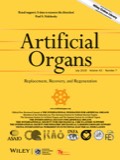Three‐dimensional tissue cultures are important models for the study of cell‐cell and cell‐matrix interactions, as well as, to investigate tissue repair and reconstruction pathways. Therefore, we designed a reproducible and easy to handle printable bioreactor system (Teburu), that is applicable for different approaches of pathway investigation and targeted tissue repair using human tissue slices as a three‐dimensional cell culture model. Here, we definitively describe Teburu as a controlled environment to reseed a 500‐µm thick decellularized human liver slice using human mesenchymal stroma cells. During a cultivation period of eight days, Teburu, as a semi‐open and low consumption system, was capable to maintain steady pH and oxygenation levels. Its combination with additional modules delivers an applicability for a wide range of tissue engineering approaches under optimal culture conditions.
"Teburu—Open source 3D printable bioreactor for tissue slices as dynamic three‐dimensional cell culture models" was published in
Artif Organs. 2019 Jun 18. doi: 10.1111/aor.13518. [Epub ahead of print]. Authors are A. Daneshgar, P. Tang, C. Remde, M. Lommel, S. Moosburner, U. Kertzscher, O. Klein, M. Weinhart, J. Pratschke, I.M. Sauer, and K.H. Hillebrandt.
Tags: Bioreactor,Tissue engineering,Tissue culture

